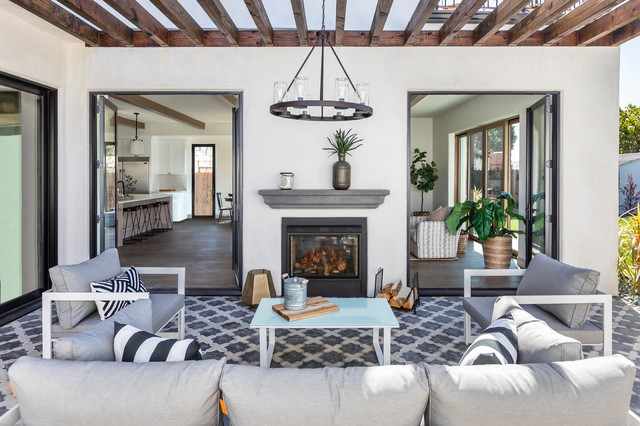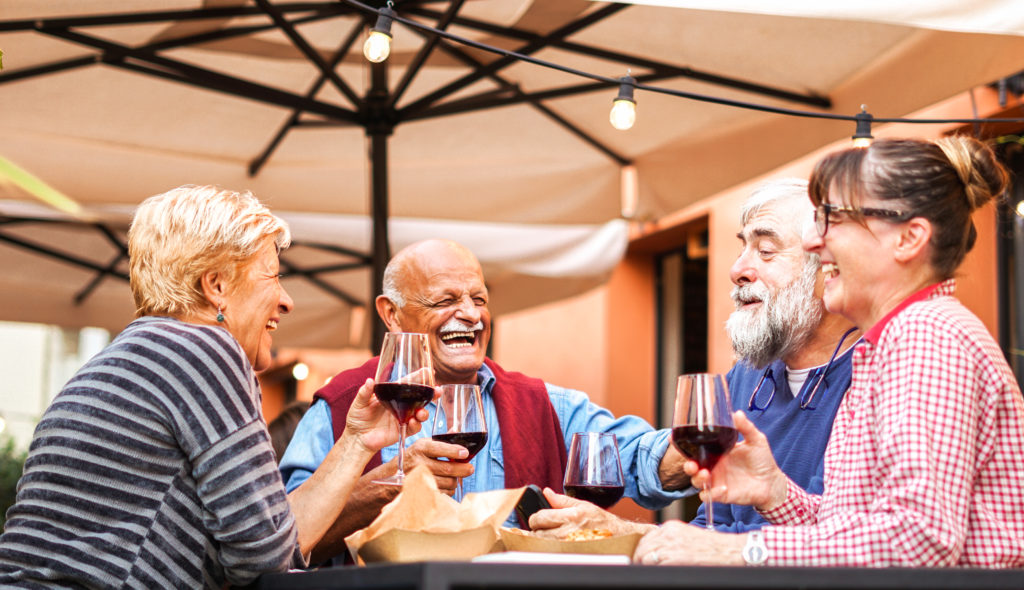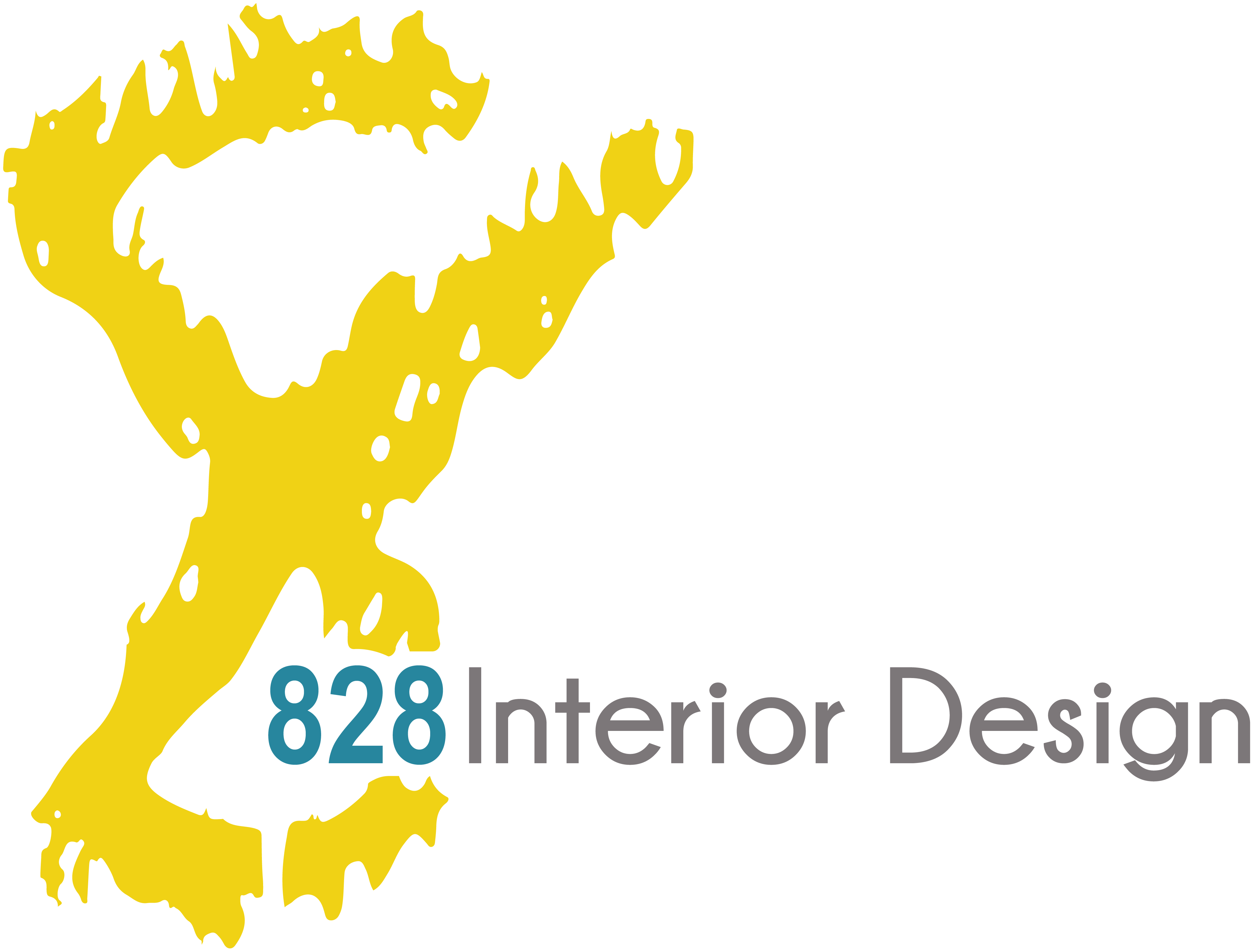It’s easy to get drawn into the allure of #interiordesign. Pinterest’s perfectly staged bedrooms and Instagram’s flawlessly decorated layouts swiftly spark creativity and inspiration.
Of course, these filter-clad photos are always impressive at a glance, but odds are they haven’t been designed to accommodate the growing needs of aging adults.
Interior design for senior living must be curated with a holistic approach. Functionality, comfort, safety, and wellness play a major role in not only enhancing resident’s lives but also attracting and retaining new residents and staff.
And given that new-build independent living, assisted living and memory care communities nationwide are beginning to resemble luxury island resorts, stakes are high to deliver functional designs that drive occupancy and keep residents happy and engaged.
That’s why it’s important to focus on design purposes when refining or planning your communities’ interior spaces.
Regardless of if you’re designing for an independent living, assisted living, or a memory care community, here’s a list of inspiring designs that are sure to keep guests happy and occupancy high.

1. Social Design
People love to gather. We gather in parks, markets, sporting events, and restaurants. We congregate in churches and around fireplaces, often with a dish and memory to share.
Our time spent social distancing shed light on how much our wellness depends on in-person interaction. And with data suggesting social isolation and loneliness are significant contributors to dementia and Alzheimer’s, it’s important that older adults sustain healthy levels of daily activity and engagement.
So what types of purposeful designs promote social well-being and give a community that all-inclusive feel that operators and administrators market?
Make It Fun!
Think of your favorite restaurant or bistro. What gets you excited to visit? Perhaps it’s the timeless décor. Maybe it’s the spaces’ chic, modern furniture, or ambient lighting. It could even be the stack of vintage board games played before dinner arrives. These design elements may seem trivial but significantly impact a space’s feel and function.
The next-generation seniors aren’t looking for the stereotypical community and they are demanding options to fit their preferences and lifestyles. That’s why care communities nationwide are being forced to offer premium amenities such as gyms, spas, movie theaters, art studios, and happy hours.
The sky’s the limit. And with wellness and engagement in demand, communities should carefully plan how to optimize interior design to improve aging seniors’ health.
The Outdoor Connection
The pandemic left a burgeoning trend in indoor/outdoor living. Connected living spaces are in demand more than ever and offer an excellent environment for engagement, programs, and activities.
Open concepts make gathering irresistible. Guests enjoy an expanded living space while benefiting from reduced levels of stress. And who doesn’t love a good patio during an evening thunderstorm?
Did You Know?
Green prescriptions are becoming more common around the world. Physicians prescribe patients time in nature rather than traditional medicine. Studies indicate that time outdoors can heighten cognitive functioning and improve sleep.

Patios are Timeless
Patios offer guests an inspiring space to share memories over coffee, dinner, or a cocktail. They’re perfect environments for relaxing and depending on your location, the addition of fireplaces, fire pits, or heating lamps can transform these seasonal spaces into year-long outdoor retreats.
Patios are also exceptionally low maintenance, leaving room in the budget for curated outdoor furniture and décor.
2. Design Themes
There’s an endless array of options to choose from when designing a safe and comfortable interior space. It can be challenging to know where to begin.
How do you approach a space that functions specifically for seniors without sacrificing style, luxury, and nostalgia?
Enchant residents with natural wood-themed interiors with furniture and accessories to match.
Go simple with something more contemporary or minimal. Design with color richness or ergonomics in mind. There’s no rule regarding personalizing your community and making your vision come to life, however understanding your audience will help drive your decisions.
But keep this one thing in mind: whichever direction you choose, understand there’s far more than aesthetic appeal to effective interior design.
Our happiness is affected by our physical surroundings. For instance, the furniture we sit in, the environment we dine in, and the color of our surroundings all have an impact on our mental health and well-being.
Today’s design trends and themes are a stark contrast to the stereotypical vision of an assisted living or skilled nursing community. With the focus leaning heavily towards holistic and preventative care, there’s much value in creating welcoming spaces themed toward happiness and comfort. This doesn’t mean you cannot incorporate design trends-which is what the majority of the market is looking for. Proper lighting and acoustical design can help offset the balance of trends and serve our aging population.
Industrial-themed interiors integrate creative features such as garage doors and salvaged material for a raw, boutique-style feel.
Exposed brick, beams, and rafters are components of this increasingly popular design theme.
3. Create Happy Spaces
It comes as no surprise that people are putting an added focus on their happiness these days.
So imagine having the ability to positively influence the mood of every guest, family, or staff member that steps foot in your communities’ doors.
It turns out it’s easier than you think.
A space’s mood and feel can be greatly influenced by subtleties in its interior design. From colors and lighting to furniture and use of space, designing with happiness in mind can also go a long way in creating that welcoming environment guests deserve, as well as reducing staff turnover.

Happy Residents
Baby boomers find pleasure in social engagement, community, convenience, and amenities, just to name a few. They prefer modern design themes and have high expectations when it comes to quality and care, as well as the quality of their living environment.
The experience is found in the details. Designing with durable furnishing and fabrics and paying attention to when handicap accessible accessories are needed, for instance, are not only a great way to lengthen the lifespan of interior fittings
Ergonomically designed senior living furniture helps reduce chronic pain, increase blood flow, and provide posture support.
These interior design details go a long way in creating happy environments that keep residents safe and loved ones’ minds at ease.
Happy Staff
Low pay, disrespect, and non-flexible scheduling top the list for reasons workers have joined the Great Resignation.
And with senior living having been hit hard by the movement, it’s more important than ever to create a welcoming environment that provides front-line workers and staff a retreat from their busy workloads.
And what better place to prevent burnout than a dedicated space for staff to relax?
A well-planned staff room can inspire creativity, increase productivity, create workplace culture, or simply provide much-needed space to gain a renewed energy.
But it’s important to think outside the typical staff room ‘box.’ Keep workers high-spirited with the inclusion of windows and natural light, dedicated spaces for both social interaction and privacy, or even a modern-style patio with all the trappings.
FACT:
Proper sunlight exposure promotes good health and contributes to the production of Vitamin D. Research indicates it improves mood and cognitive functionality as well as controls the secretion of melatonin.
4. Durable Finishes and Furniture
A community’s furniture plays an important role in keeping seniors safe.
Imagine a piece of furniture’s sharp edge resulting in an unexpected cut or bruise. Or even worse, an injury resulting from furniture sliding too easily across slick surfaces.
Choosing long-lasting, durable fittings provides guests with added safety and comfort, decreases maintenance costs, and increases a piece’s lifespan.
Keep it Clean
Comfort, safety, and durability are top priorities when adorning your community with furniture and fittings meant to inspire.
So when it’s time to pick and choose, there’s much to consider to ensure guests are happy and maintenance costs are low.
For instance, chairs and moveable absent of upholstery are not only in high demand but are a great option for reducing time spent cleaning and fighting stains and accidents. Upholstery-less furniture is also easier to keep disinfected and safe from germs.
Additionally, furniture’s shape, height, color, and material impact a senior’s mental health and sense of well-being.
Durable Finishes
Food spills, accidents, maintaining cleanliness, and general stress greatly impact furniture’s finish.
The pandemic resulted in higher safety measures regarding cleanliness and sanitation in assisted living communities. While these measures aid with disease and infection control, they unfortunately reduce a furniture’s life span.
Wood furniture can be specially treated to withstand cleaning and sanitizing by newer products that are being newly introduced in the senior living market.
Vinyl flooring’s rugged durability is a great choice to stand up to heavily trafficked areas and can withstand the weight and impact of assistive devices.
5. Keep Up with Tech
Resident life looks different compared to 20 years. Tablets and Kindle readers have replaced books and magazines. Entertainment often requires an app-store download rather than a deck of cards. Watches must be charged overnight.
Groundbreaking advances in technology are a real-life fountain of youth, increasing our lifespans and improving our health and wellness. In fact, people today are living longer than at any time in history. Wearable tech such as smart watches can analyze health metrics, track physical activity, and even monitor insulin levels.
But smart tech goes far beyond the latest Fitbit. Nowadays, there’s a smart version of nearly every household necessity; smart toothbrushes, smart frying pans, and even smart toasters.
But while an app for morning toast might be excessive, there are countless smart systems that, when integrated effectively, can increase guest safety and satisfaction.

Smart floors
Seniors are unfortunately at high risk of falling. Research indicates that falls account for 32,000 deaths amongst older adults annually in the United States. Furthermore, 1 in 5 falls results in significant injury.
Thankfully, there are cutting-edge approaches to monitoring falls in senior care.
Smart floors are floors designed to monitor movement and sense pressure. When the system catches an irregularity, such as a fall or stumble, the appropriate staff is alerted. The added safeguard is welcomed and helps ease the mind of families and loved ones.
The sensors themselves are installed much like floor heating, leaving plenty of room for a tailored floor design with senior-specific furniture to match.
Tech Integration
A little goes a long way. Integrating USB power ports in home electrical systems is becoming increasingly common. An increasing number of devices and electronics rely on Wi-Fi to function.
As more of our lives become integrated with tech, It can be difficult to gauge the needs of tomorrow today. But considering how quickly tech-related changes occur, it’s best to plan your community accordingly.
Start Designing with Confidence
So, how do you accomplish the five inspiring design elements? Partner with a senior living interior design firm.
Designing communities with intent and purpose not only gives you a competitive advantage but also cuts down on costly design mistakes. And with evolving consumer trends, constantly changing government regulations, and history’s first tech-adorned retirees entering senior care, speedy wifi is just the tip of the iceberg on a long list of considerations in this new age of senior living.

